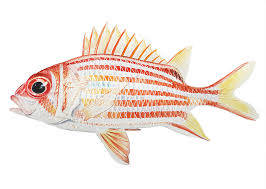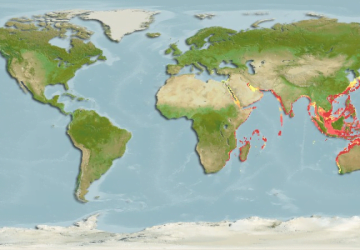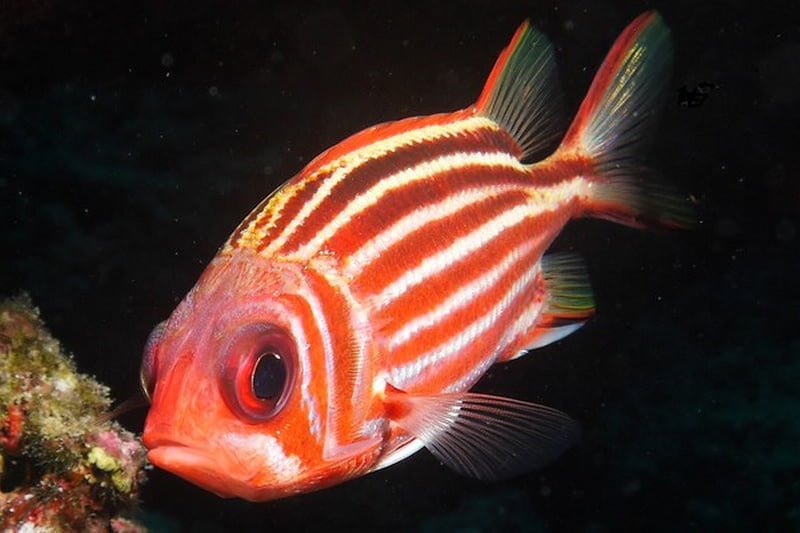Sargocentron Rubrum
– Red Squirrelfish –

| Scientific classification |
|---|
Sargocentron rubrum
(Forsskål, 1775)[1]
| Kingdom: | Animalia |
| Phylum: | Chordata |
| Class: | Actinopterygii |
| Order: | Beryciformes |
| Family: | Holocentridae |
| Subfamily: | Holocentrinae |
| Genus: | Sargocentron |
| Species: | S. rubrum |


Sargocentron rubrum, also known as red squirrelfish or redcoat, is a member of the family Holocentridae of the order Beryciformes. Squirrelfish in general are large, active, nocturnal fish which are usually red in color.[2]
It is found in the Indian Ocean, from the Red Sea to the West Pacific, where it ranges from southern Japan to New Caledonia and New South Wales, Australia. Recently recorded also in Tonga. It invaded the eastern Mediterranean via the Suez Canal.[3]
Description
The appearance is typical of the family with an elongated oval body, large eyes, a long and showy thorn on the gill operculum and pointed muzzle.
The colouration is very lively, bright red with white spots on the tips of the spiny rays and on the membranes between the rays of the dorsal fin and on the first rays of the ventral and anal fins . The sides are red with some longitudinal white stripes of the same height as the red parts. The caudal fin is colorless except the outermost rays which are red.
It measures up to 37 cm but normally does not exceed 30.
Distribution and Habitat
It populates the tropical regions of the Indian and Pacific oceans . Following the Lessepsian migration it established populations in the southeastern Mediterranean Sea between eastern Libya and southern Turkey . It is not present in Italian waters.
It lives in a variety of shallow-depth environments including coral reefs , rocky bottoms, and even wrecks and harbors . During the night it moves to a few tens of meters deep.
Biology
It is nocturnal and spends the hours of the day hidden in caves or crevasses, often in areas with strong currents.
Alimentation
It mainly feeds on benthic invertebrates , especially crustaceans , but also captures small fish.
Reproduction
The eggs and larvae are pelagic , the juveniles have long spines on their heads.
Aquarium
It is bred only in public aquariums.
Fishing
Occasional and of very little interest.
Human Hazards
The opercular spines are weakly poisonous.










































































































































































































































































































































































